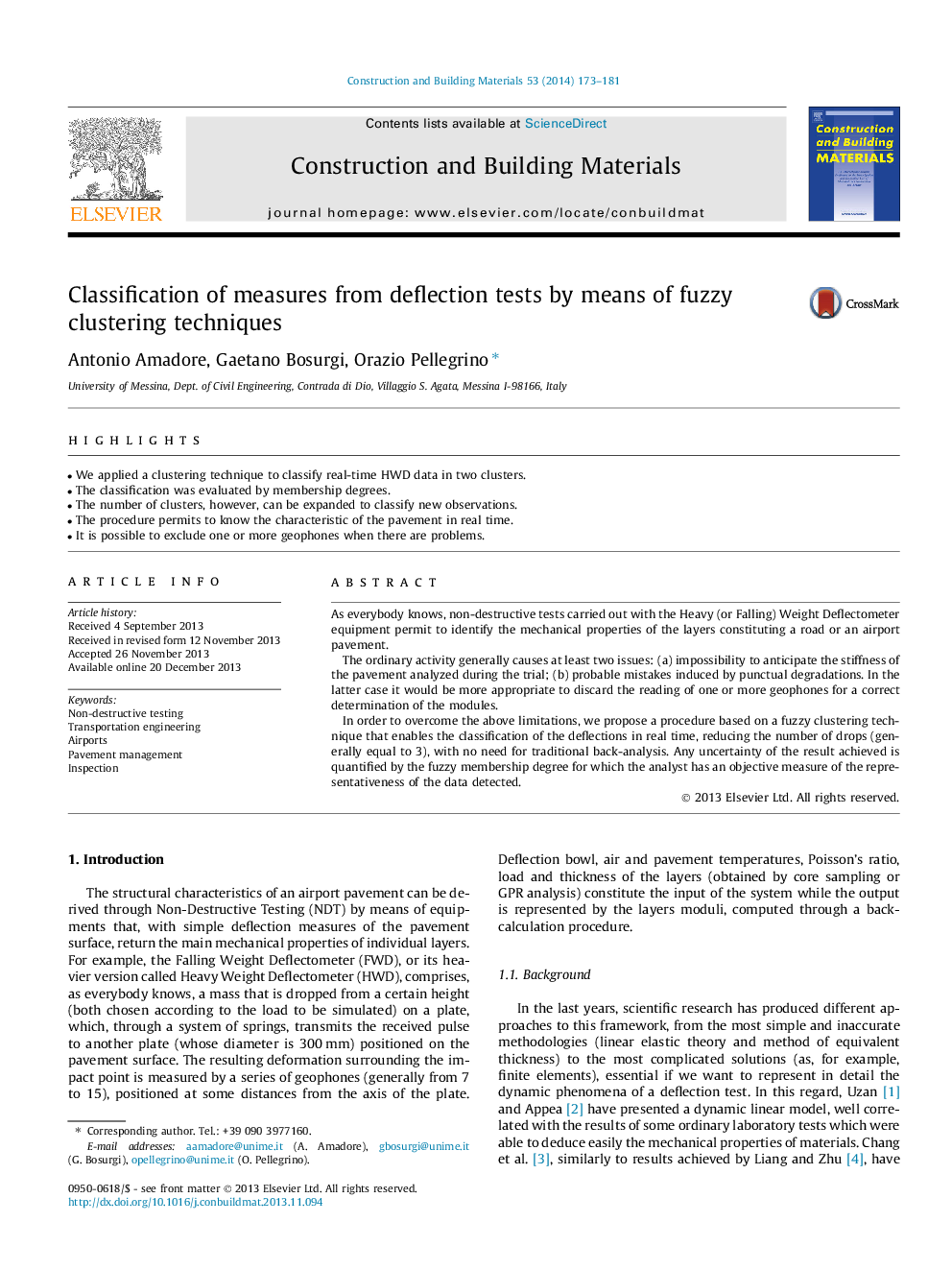| Article ID | Journal | Published Year | Pages | File Type |
|---|---|---|---|---|
| 257743 | Construction and Building Materials | 2014 | 9 Pages |
•We applied a clustering technique to classify real-time HWD data in two clusters.•The classification was evaluated by membership degrees.•The number of clusters, however, can be expanded to classify new observations.•The procedure permits to know the characteristic of the pavement in real time.•It is possible to exclude one or more geophones when there are problems.
As everybody knows, non-destructive tests carried out with the Heavy (or Falling) Weight Deflectometer equipment permit to identify the mechanical properties of the layers constituting a road or an airport pavement.The ordinary activity generally causes at least two issues: (a) impossibility to anticipate the stiffness of the pavement analyzed during the trial; (b) probable mistakes induced by punctual degradations. In the latter case it would be more appropriate to discard the reading of one or more geophones for a correct determination of the modules.In order to overcome the above limitations, we propose a procedure based on a fuzzy clustering technique that enables the classification of the deflections in real time, reducing the number of drops (generally equal to 3), with no need for traditional back-analysis. Any uncertainty of the result achieved is quantified by the fuzzy membership degree for which the analyst has an objective measure of the representativeness of the data detected.
